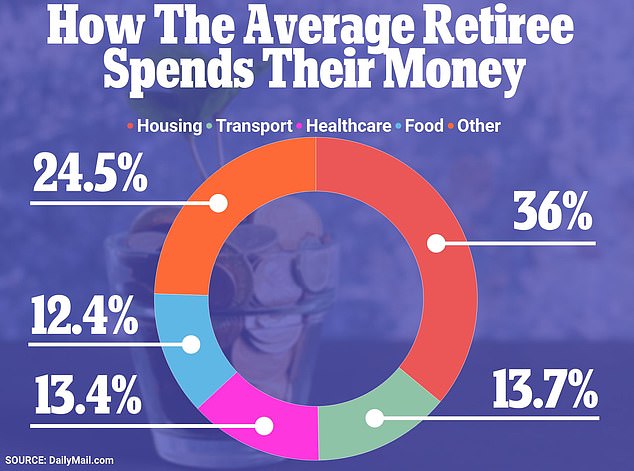The US has 2 MILLION more retirees than predicted as coronavirus shutdowns lead older people to stop working and employers scramble to fill vacancies
- The pandemic-era rush to retirement shows little sign of slowing
- But the tighter labor market means employers are making plans to bring them back
Policymakers have panicked as the wave of retirements during the pandemic has continued and even gained momentum.
Official forecasts for the number of retirees are almost two million people short, with little sign of them returning to the labor market.
The percentage of the adult population retiring has risen from 15 percent in 2007 to just under 20 percent, and has increased sharply since 2020, defying Federal Reserve predictions.
“While the gap appeared to be closing earlier this year, it appears to have widened somewhat since then,” said Miguel Faria-e-Castro of the Federal Reserve Bank of St. Louis. Bloomberg.
“As of September, we estimate approximately 1.98 million surplus retirees.”
Official forecasts for the number of retirees are almost two million short of people and there is little sign that they will return to the labor market

The percentage of the adult population retiring has increased from 15 percent in 2007 to just under 20 percent.

According to the Bureau of Labor Statistics (BLS), the average retiree earns a pre-tax income of $55,335, of which he spends approximately $52,141 per year. But 75% of this spending goes to four key areas
Half of the wealth in the US is now held by people born before 1965, a study found this summer, helped by decades of rising house prices and declines in relative wages for young people.
But with unemployment below 4 percent for the longest time in fifty years, employers are feeling the pressure of a tight labor market and are looking at ways to get seniors back to work.
More than 2,500 companies, including Bank of America, Microsoft and H&R Block, have signed the AARP pledge to build an age-inclusive workforce, with new signatures more than doubling in the past year.
Michigan last month amended state law to make it easier for retired teachers to return to the classroom without risking their pensions. Other states are expected to follow suit as employers try to fill 9.6 million job openings with 6.4 million job seekers.
“It’s a win-win situation,” said Democratic state lawmaker Matt Koleszar.
“For employers, they are filling these much-needed positions, addressing workforce challenges, and it’s a win for these older workers.”
But older workers may not see it that way, with only one in six retirees considering a break from their time off.
According to a study by Paychex.
“Boredom is a big problem,” David Mendels, director of planning at Creative Financial Concepts, told CNBC.
“Even if you hate your job, it’s a big part of who and what you are. And if you take that away, it’s a big problem for a lot of people.”
But despite employers’ increasing eagerness, the ship may be for those approaching retirement, with only 3% getting a job in a year.
And for those looking, it takes people over 65 an average of 31.6 weeks to find a job, compared to 22 weeks for young people.
But AARP insists that older workers remain a potential gold mine for bosses looking to close their labor shortages.
“It makes good business sense to hire experienced workers,” says Heather Tinsley-Fix, AARP’s chief employer engagement officer.
“More companies are also recognizing the need to consider age in their diversity, equity and inclusion efforts.”
